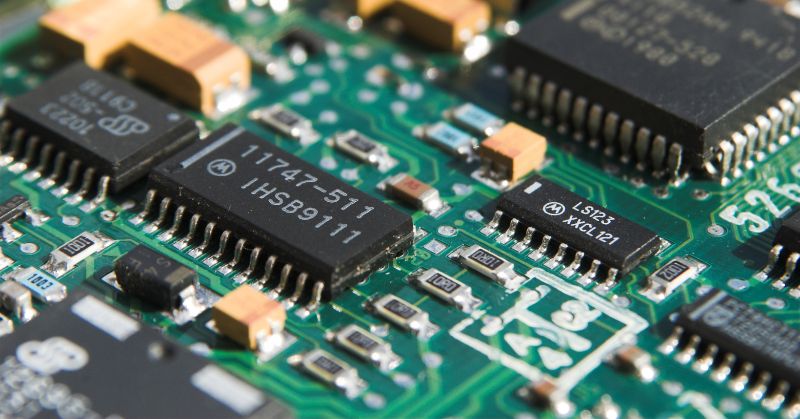What Does BMS Mean? A Comprehensive Guide
In April 2024, Massachusetts recorded 50 incidents of lithium-ion battery fires. This figure is more than double the annual average of such incidents. The most highlighted case was an apartment building that caught fire due to the combustion of an electric bike battery during charging. This is where the battery management system plays its role.
BMS is essential because it maintains the durability, security, and performance of battery-operated systems to avoid experiencing such cases. Are you wondering what exactly the BMS meaning is? This article explains it all. It not only helps you understand the battery management system and how it works but also presents the importance and benefits of this system.
What is a battery management system (BMS)?
When a battery is charged or discharged, a specific system that monitors and manages the internal operating characteristics of current, voltage, and temperature is commonly known as the battery management system or BMS. In order to enhance the safety and performance of the battery, a BMS determines the State of Health (SoH) and the State of Charge (SoC).
A BMS keeps battery packs away from overcharging and undercharging. This way, it keeps the charge level between the lowest and highest permitted levels. This is how a BMS prevents batteries from experiencing explosions and other unexpected events. Therefore, a battery management system is an essential tool for protecting both the users and the battery itself.

Let's now talk about what a BMS is composed of or what components it carries along. The major components of a battery management system include:
- Sensors
- Microcontroller
- Communication interface
Three different types of sensors are integrated into the system to ensure enhanced safety. The sensors include current, temperature, and voltage sensors that continuously monitor the level of each parameter.
A microcontroller executes all the control algorithms and serves as the backbone of the whole system because it takes all important actions and decisions. It is also called a digital signal processor.
A communication interface enables the exchange of information with other systems or devices. It plays a crucial role in effectively controlling and monitoring the battery systems.
Apart from that, protection circuitry and a balancing circuit are also key components of a battery management system.
How does a battery management system work?
There is no specific set of criteria for a battery management system to work accordingly. It actually correlates with the certification requirements issued by government bodies, battery size or complexity concerns, and safety and applications concerns.
To understand how a BMS works, we should be familiar with the primary functions of this system, such as monitoring, estimation of state, cell balancing, power management, thermal management, communication, and protection. Let's explore each function one by one.
- Monitoring: A BMS continuously monitors the temperature, current, and voltage levels of battery packs to make sure that they are operating in safe conditions. If the levels of any parameter are above or below the set value, it increases or decreases them accordingly.
- Estimation of state: The state estimation function of a BMS keeps a close eye on the State of Health (SoH) and the State of Charge (SoC). It also focuses on the state of power and the state of energy. SoC determines how much charge is left on a battery, whereas SoH tells the overall health of a battery.
- Cell balancing: Manufacturing variations and different usage patterns or varying temperature conditions can cause battery cells to exhibit different charge levels. A BMS creates a solid balance between all the battery cells to make sure that they operate at the same charge level.
- Power management: A BMS monitors and controls the flow of power into and out of the battery packs. With a constant-current, constant-voltage algorithm, a battery management system prevents overcurrent and overvoltage scenarios.
- Thermal management: A BMS activates coolers and heaters to make the battery packs operate in safe thermal conditions. A low temperature reduces the battery's usable capacity, whereas a high temperature greatly decreases the battery's lifespan.
- Protection: A protection circuitry within the battery management system protects battery packs from experiencing conditions, including over temperature, overvoltage, overcurrent, overcharging, and undercharging.
- Communication: A BMS communicates with other systems and devices with a communication interface. It also displays the real-time status of the battery. This interface also assists a BMS in receiving energy management instructions.
Types of battery management system
A number of simple and advanced battery management systems are currently available on the market. They adopt different technologies and enhanced features to protect batteries from any unusual condition. Three popular BMS types are centralized, distributed, and modular. Let's explore them one by one.
1. Centralized BMS
In this battery management system, one central BMS is connected to all battery packs directly. This system offers several benefits, such as it is the most budget-friendly system, as it contains only one BMS. In addition, it is more compact than the other alternatives.
Apart from a series of benefits, a centralized BMS also has some limitations. Since all batteries have to connect with the central BMS, the BMS needs many ports to make a smooth connection with all of them. This situation requires lots of connectors, cabling, and wires.
2. Distributed BMS
In a distributed BMS, a control board carries all electronic hardware components. This board is placed directly on the module or cell that is under monitoring. It eliminates the bulk cabling to a few communication and sensor wires between the adjacent modules of the battery management system.
Each BMS in a distributed battery management system is self-contained and carefully handles communications as and when needed. On the other hand, a distributed BMS makes maintenance and troubleshooting difficult. In addition, it is costly, as they contain more BMS unlike a centralized BMS.
3. Modular BMS
In this type of battery management system, a BMS is divided into different duplicated modules. Each module carries a dedicated number of connections and wires. A modular BMS makes maintenance and troubleshooting easy and simple. In addition, it makes it straightforward to go for large battery packs.
Renogy built-in battery management system
Are you looking for a battery that comes with a built-in battery management system for enhanced safety and protection of the user as well as the battery itself? Try Renogy 12V 100Ah Pro Lithium Iron Phosphate Battery. The major reason why thousands of people prefer this battery is that it offers more than 60 alters and protection functions. As a result, it offers more accurate monitoring in all environments.

In addition, the Renogy battery not only identifies thermal and electrical hazards but also reduces the chance of them happening. It will never compromise your battery packs, as it cuts off the circuit 40 times faster than traditional passive protection.
Moreover, the double active safety system makes the Renogy battery stand out in the market. This system is introduced to safeguard individuals, properties, and devices in an all-around way. Furthermore, it actively avoids incidents by combining hardware and software security.
The importance of battery management systems
Each function of a BMS tells the importance of this system for battery and user protection. The most prominent protection a battery management system offers is functional safety during the charging and discharging process when it maintains the certain levels of current, voltage, and temperature.
If current, temperature, or voltage level increases above or decreases below the set limits, the expensive battery packs can be at severe risk. However, a BMS continuously monitors and controls these situations. For example, if a lithium-ion battery stays in a low-voltage condition, copper dendrites may appear on the anode terminal. It may cause increased safety concerns and increased battery discharge rates.
Apart from protection, maintaining the performance of battery packs is another potential function of a battery management system. It covers thermal and electrical management. When it comes to thermal management, a BMS ensures that the state of charge of each adjacent cell throughout the battery pack is equivalent. It is very important to prevent cells from overcharging.
When the temperature increases or drops below certain levels, a BMS activates heaters or coolers to adjust the temperature levels and make battery packs work perfectly. This is also considered one of the most important features of a BMS that keeps batteries functioning in all kinds of environmental conditions.
If you often struggle to charge the battery packs in an extreme cold or extreme hot environment, all you need is a battery management system to get out of this trouble. Simply put, a BMS ensures reliability, good health, longer life, and enhanced performance of a battery pack.
The benefits of battery management systems
A few of the advantages a BMS offers are listed below.
1. Increased performance
A battery management system equalizes the state of charge of each cell within the battery pack to ensure that they all have the same charge for maximized performance. Unmatched functions of a BMS give a solid boost to the overall performance of a battery pack.
2. Cost reduction
Though the addition of a BMS into BESS increases the cost of the system, it offers hundreds of safety features and enhanced protection to protect expensive battery packs from any hazardous conditions like explosions. Therefore, the overall cost that may be needed to troubleshoot or find faults in the battery packs without a BMS is reduced when you incorporate a battery management system.
3. Extended lifespan
Thermal and electrical management features of a BMS make sure that all cells within the battery pack operate on the set SOA requirements and keep them away from fast charging/discharging and aggressive usage. In simple words, a BMS keeps the battery system stable that can last for hours, and provides maximized performance.
4. Functional safety
Advanced batteries like lithium batteries also have a little chance of catching fire and other management errors. This is why functional safety is paramount. A battery management system keeps battery packs safe during charging, discharging, and operation.
5. Diagnostics and external communication
A BMS continuously monitors all parameters of battery packs, such as voltage, temperature, current levels, and more. Monitoring these parameters helps a BMS solve various issues. In addition, it displays data like how much charge is left on the battery and other stats. The communication interface helps communicate with other devices.
Conclusion
What does BMS mean? Is this what you're looking for? Well, it is a battery management system that ensures the safe, reliable, and long-lasting performance of battery packs. It also displays information to keep users updated about the batteries' statuses. If you need a battery with a built-in BMS, explore the collection available at Renogy.











